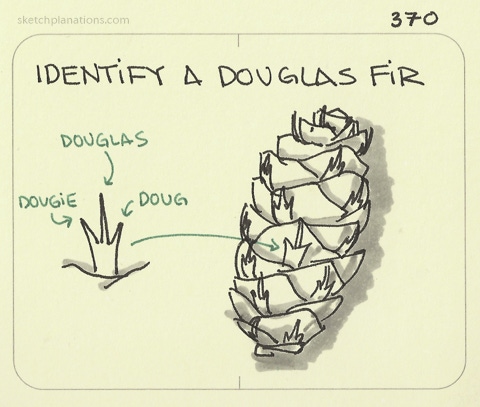Identify a Douglas fir


- Copied!
👇 Get new sketches each week
How to identify a douglas fir? I find identifying the sometimes subtle differences of tall evergreens rather difficult, but fortunately, that's not the case for the douglas fir.
Identifying a douglas fir, a tall, straight and very impressive evergreen conifer is easy with this simple reminder if you find any cones. Normally, the cones are easy to find around the base of a tree. For such a large tree, like the redwood or sequoia, the cones are quite small.
Douglas fir cones have many small 3-pointed tongues (or bracts) that emerge from the tight cones. Typically, they are of unequal lengths with the longest in the centre. After it came to mind to name each one Dougie, Douglas, and Doug, in turn, after the length of each point, I haven’t forgotten since and identifying a douglas fir is easy.
Mature douglas firs typically have grey, tough and deeply-fissured bark to go with it.
The douglas fir, one of my favourite trees, might even have grown above the tallest redwoods living today making the douglas fir one of the tallest known trees .
The Douglas fir is named after Scottish botanist David Douglas and is not a true fir tree and so it's sometimes written Douglas-fir.
Also see: Ponderosa pine fire protections, nurse log, phoenix trees

